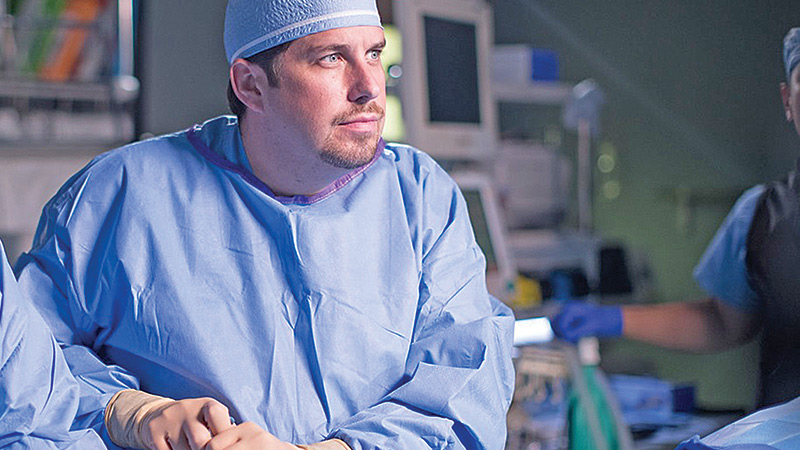Mercy improves lung cancer outcomes

Robotic-assisted surgical procedures were once seen as futuristic concepts. Now, they are becoming the standard of care.
In 2017, St. Elizabeth Youngstown upgraded robotic technology to the da Vinci XI model, which allowed the hospital to expand into complex lung robotic procedures, and likely within the next year, heart procedures.
Dr. Lucas Henn, a heart and lung surgeon who has trained under some of the leaders in the world in minimally invasive robotic procedures in Germany and at Cedars-Sinai Medical Center in Los Angeles, leads Mercy Health’s thoracic surgery team.
In the past 18 months, he has completed more than 80 lung cases using the robot, a volume well above the 40-per-year average for robotic lung procedures at hospitals nationally. Many of them are complete lung resections where Dr. Henn removes cancerous masses from a patient’s chest area.
“This new generation of robotics is truly unbelievable,” Dr. Henn said. “It allows for some very complex operations to be done with what amounts to five, less-than-a-centimeter each incisions.”
Traditional surgeries of this type, conversely, could include larger, 15-20 centimeter incisions with rib spreaders.
“Those are incredibly painful procedures,” Dr. Henn said. “Patients typically go to the ICU afterward and spend at least five or six days in the hospital.”
Whereas with robotic-assisted procedures, he added, 20 percent of his patients with major lung resections go home the next day.
Serious lung-related illnesses are very common in the Mahoning Valley. Here, lung cancer rates and lung cancer deaths are significantly higher than the national average, Dr. Henn said.
“There is more volume here, but it’s a dramatically undertreated problem.”
Part of that stems, he said, from the traditionally operative approach being riskier.
“But it’s been proven over and over again that with minimally invasive surgery on the lung you have less bleeding, less risk of infection, less ICU time – and for many patients no ICU time – less risk of re-operation; less pain and soreness, and there’s a trend of improved long-term survival from lung cancer,” Dr. Henn said.
The advantages of the robot include better visualization for the surgeon because of the 10-times magnification of the surgical field. Further, the instruments can move as the surgeon’s wrists would move, and the stapler used for major lung resections can be held directly by the surgeon, giving him or her more control.
“These are life-prolonging and life-saving procedures,” Dr. Henn said.
As with any new technology, questions do follow. But, Dr. Henn feels patient reaction is changing when he first discusses robotic procedures.
“Patients are becoming more accepting,” he said. “I like to stress that I am controlling the robot and it does whatever I want it to do.”
With these major investments in newer technology, the bottom line with robotic-assisted procedures in the Mahoning Valley is that they’re producing better patient outcomes.
For more information on robotic surgery, visit mercy.com.
 43
43
